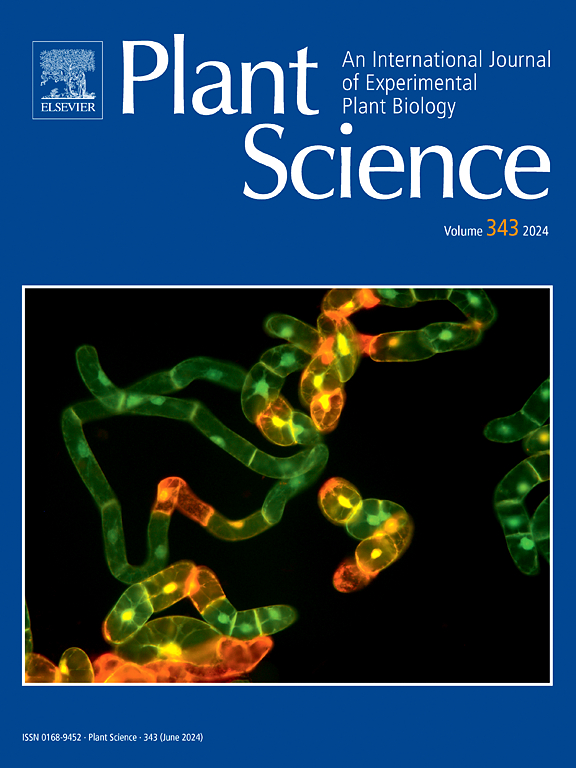Root architecture and the rhizosphere microbiome: Shaping sustainable agriculture
IF 4.2
2区 生物学
Q2 BIOCHEMISTRY & MOLECULAR BIOLOGY
引用次数: 0
Abstract
Understanding root architecture and exudation is fundamental for enhancing crop productivity and promoting sustainable agriculture. Historically, plant researchers have focused on above-ground traits to increase yield and reduce input dependence. However, below-ground traits, especially those related to the root system, are equally critical yet often overlooked due to phenotyping challenges. Root architecture, including some root traits, i.e., lateral root density, root hair abundance, and root tip number, plays central roles in plant establishment, stress tolerance, and the recruitment of beneficial microbes in the rhizosphere. Root exudates, a complex array of chemical compounds released by roots, vary with plant species, developmental stage, and environmental conditions. These compounds act as signals and nutrients, shaping the composition and function of rhizosphere microbial communities. In turn, the microbiome of rhizosphere contributes to plant health by facilitating nutrient uptake, enhancing stress resilience, and providing defense against pathogens. Integrating root traits into breeding programs offers promising opportunities to select for genotypes that are more efficient in recruiting beneficial microbes. Heritable root traits, such as increased branching, finer roots, and higher exudation capacity, can enhance microbiome assembly and stability. The assessment of genes can also regulate of these traits and represent targets for genomics-assisted selection. Some strategies, such as microbiome engineering, particularly through the design of synthetic microbial communities (SynComs), can be used to modulate root architecture and optimize plant-microbe interactions. Despite these promising outcomes, challenges remain in translating SynCom applications to the field due to environmental variability, native microbial competition, and limited understanding of host genetic controls. This review discusses how root architecture shapes the rhizosphere microbiome and explores strategies, such as trait-based breeding and microbiome engineering, for advancing sustainable crop production.
根构型和根际微生物群:塑造可持续农业。
了解根系结构和根系渗出是提高作物生产力和促进可持续农业的基础。从历史上看,植物研究人员一直把重点放在地上性状上,以提高产量和减少对投入的依赖。然而,地下性状,特别是与根系相关的性状,同样重要,但由于表型挑战而经常被忽视。根构型包括侧根密度、根毛丰度和根尖数量等根系性状,在植物的生长、抗逆性和根际有益微生物的吸收等方面起着重要作用。根系分泌物是根系释放的一系列复杂化合物,随着植物种类、发育阶段和环境条件的变化而变化。这些化合物作为信号和营养物质,形成根际微生物群落的组成和功能。反过来,根际微生物组通过促进养分吸收、增强应激恢复能力和提供对病原体的防御来促进植物健康。将根系性状整合到育种计划中,为选择更有效地招募有益微生物的基因型提供了有希望的机会。可遗传的根系性状,如分枝增加、根系细化和较高的渗出能力,可以增强微生物组的组装和稳定性。基因的评估也可以调节这些性状,并代表基因组辅助选择的目标。一些策略,如微生物组工程,特别是通过设计合成微生物群落(SynComs),可以用来调节根结构和优化植物与微生物的相互作用。尽管取得了这些有希望的成果,但由于环境的可变性、原生微生物的竞争以及对宿主遗传控制的有限了解,将SynCom应用到现场仍然存在挑战。本文讨论了根构型如何塑造根际微生物群,并探讨了促进作物可持续生产的策略,如基于性状的育种和微生物群工程。
本文章由计算机程序翻译,如有差异,请以英文原文为准。
求助全文
约1分钟内获得全文
求助全文
来源期刊

Plant Science
生物-生化与分子生物学
CiteScore
9.10
自引率
1.90%
发文量
322
审稿时长
33 days
期刊介绍:
Plant Science will publish in the minimum of time, research manuscripts as well as commissioned reviews and commentaries recommended by its referees in all areas of experimental plant biology with emphasis in the broad areas of genomics, proteomics, biochemistry (including enzymology), physiology, cell biology, development, genetics, functional plant breeding, systems biology and the interaction of plants with the environment.
Manuscripts for full consideration should be written concisely and essentially as a final report. The main criterion for publication is that the manuscript must contain original and significant insights that lead to a better understanding of fundamental plant biology. Papers centering on plant cell culture should be of interest to a wide audience and methods employed result in a substantial improvement over existing established techniques and approaches. Methods papers are welcome only when the technique(s) described is novel or provides a major advancement of established protocols.
 求助内容:
求助内容: 应助结果提醒方式:
应助结果提醒方式:


